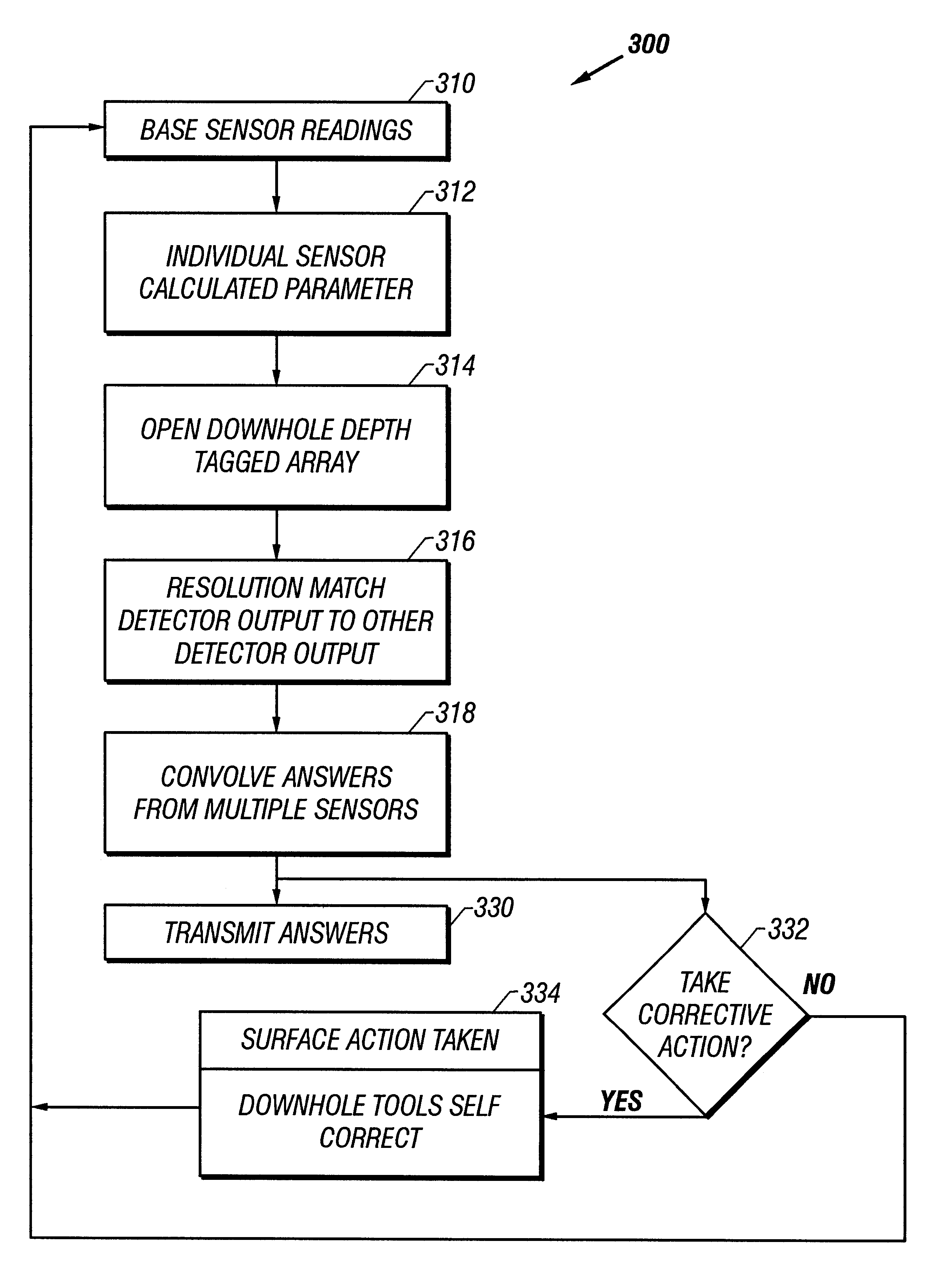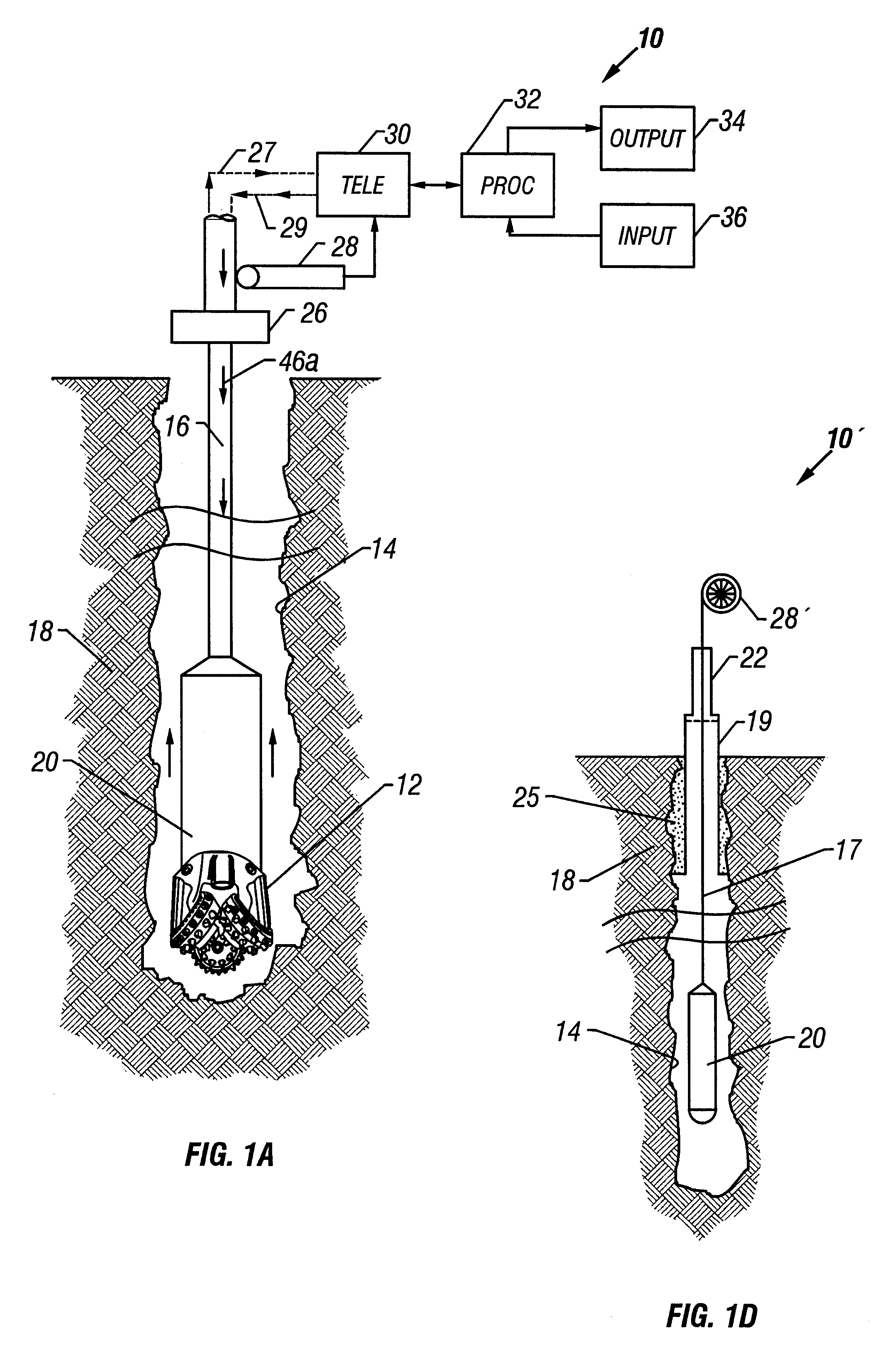Drilling system with downhole apparatus for determining parameters of interest and for adjusting drilling direction in response thereto
a drilling system and downhole technology, applied in the field of drilling systems, can solve the problems of limiting the ability to transmit a vast amount of useful information about the formation of downholes and the conditions of downholes to the surface during drilling operations, and high cos
- Summary
- Abstract
- Description
- Claims
- Application Information
AI Technical Summary
Problems solved by technology
Method used
Image
Examples
Embodiment Construction
FIG. 1a shows a schematic diagram of a measurement-while-drilling (MWD) embodiment of the system 10 of the present invention. It includes a downhole subassembly 20 that is suspended within the borehole 14 by a drill string 16 during drilling of the borehole 14. The downhole subassembly 20 is positioned as close as practical to the drill bit 12. The drill bit 12 is rotated by a downhole motor contained in the downhole subassembly and / or by rotating the drill string by a surface prime mover to drill the borehole 14 in the earth formation 18. For simplicity, the prime mover and other components of the surface drilling rig are not shown. A preferred embodiment of the downhole assembly 20 comprising various sensors and devices will be described later with reference to FIGS. 1b and 1c.
Data from the downhole subassembly 20 are telemetered by a downhole telemetry system (not shown) in the downhole subassembly 20 to an uphole telemetry element 30. The uplink data telemetry path is indicated ...
PUM
 Login to View More
Login to View More Abstract
Description
Claims
Application Information
 Login to View More
Login to View More - R&D
- Intellectual Property
- Life Sciences
- Materials
- Tech Scout
- Unparalleled Data Quality
- Higher Quality Content
- 60% Fewer Hallucinations
Browse by: Latest US Patents, China's latest patents, Technical Efficacy Thesaurus, Application Domain, Technology Topic, Popular Technical Reports.
© 2025 PatSnap. All rights reserved.Legal|Privacy policy|Modern Slavery Act Transparency Statement|Sitemap|About US| Contact US: help@patsnap.com



